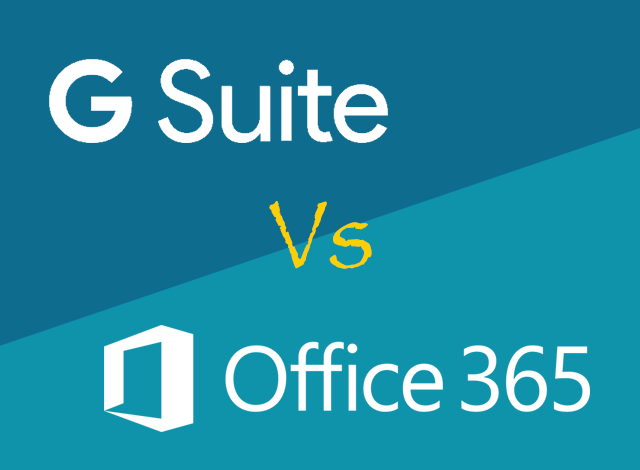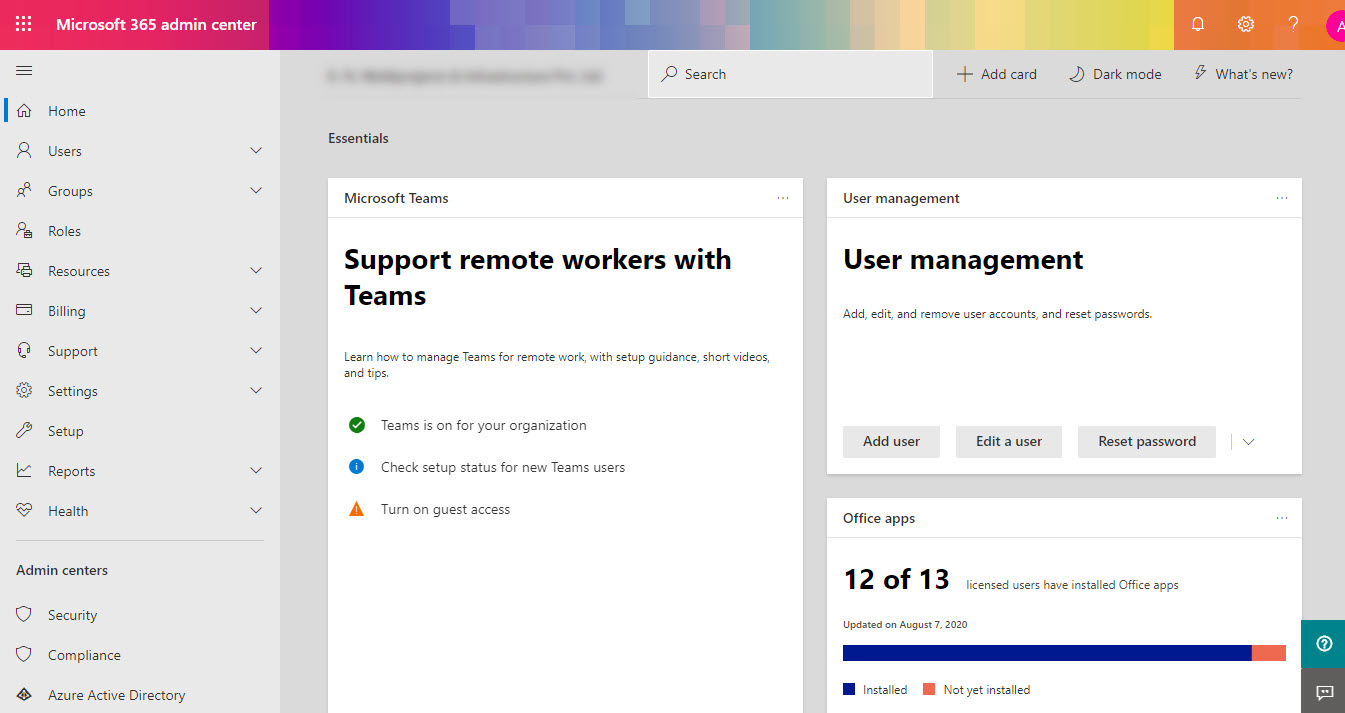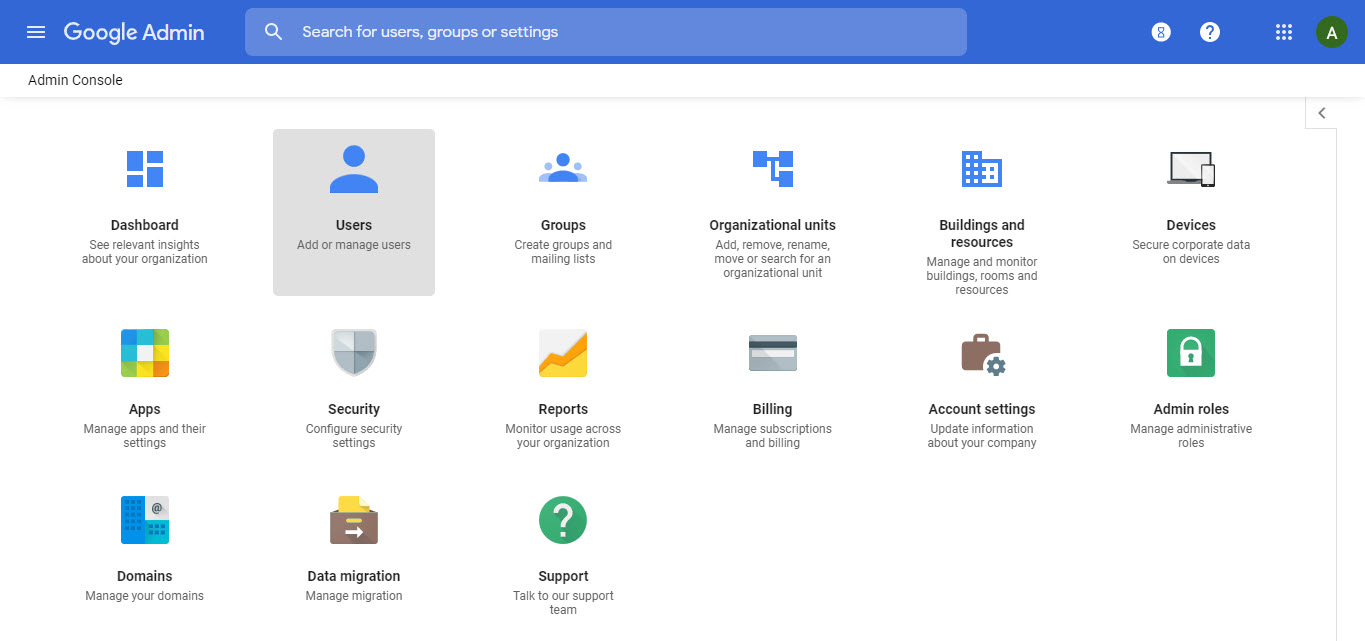
As G-Suite from Google (formerly known as Google Apps for Work) and Microsoft Office 365 have now been the most popular office products in the market, we have tried to do a comparison between these two. It is to be noted that Microsoft’s Office which has been reincarnated as Office 365 is still a choice for most due to its richness in features and wide followers (users).
Let us try to understand these two products based on different parameters.
What is Offered?
When we speak about any of these two products, we refer to multiple Apps within them. In short, they offer a comprehensive list of productivity Apps. The table below provides a list of Apps for each.
| APPS | GSUITE | OFFICE365 |
|---|---|---|
| File Storage | Drive | OneDrive |
| Document Editing | Docs | Word |
| Spread Sheets | Sheets | Excel |
| Chatting & Video Calling | Hangouts | Skype |
| Presentation | Slides | PowerPoint |
| Gmail | Outlook | |
| Forms | Forms | Forms |
| Calendar | Calendar | Calendar |
| Social | GPlus | Yammer |
| Feed | News | Newsfeed |
| Web | Sites | SharePoint |
| Collaboration | Classroom | OneNote |
If you scan the Apps in detail, it will be evident that these offer functionalities for file storage, editing documents, organising data, and collaborating in different ways. As Office 365 inherits Microsoft’s legacy Office products, all the typical rich functions of document management, presentation, light-weight data management facility, and offline version of the software, it has a clear perceptible edge over other products in the market; so, the same applies vis a vis G-Suite. On the other hand, G-Suite has thin clients that primarily work on the Cloud and with Internet connectivity (though offline Apps exist and can facilitate work in no-connectivity situations).
Setup and First Use
Even though both are popular products and have been in the market for quite some time, the Cloud version offers certain challenges regarding the process of subscription, activation, and renewal. Of course, it would be prudent to note that things like keeping an updated copy of a document or file across different devices (synchronisation), managing two-level authentication and accounts for access and use, and handling multiple apps and data for day to day use.

In case of Google, the portal is rather centralised and provides access to all Apps for a single subscription. It makes the process from subscription to activation and uses comparatively simpler.

Private Branding
Both offer private branding for logo, banner, and domains. Google allows incorporating your own domain name during the registration, whereas you will input private domain name after the registration. For mapping domain name on Office 365, the hosting will need a static IP if the same domain name is also used to host your website. While domain mapping is a pure redirection on both, Google allows you to set up a private URL to access your Apps.
Help and Product Support
Both products, G-Suite and Office365, have extensive documentation that is available online. A large community of users offers a secondary source of information for troubleshooting and usages guidelines. However, it will be futile to try to contact customer support to receive direct help. Rather, you would need to contact a Microsoft Partner if you have bought the products from them. Else, it would be recommended to go for managed service providers for these products.
Opportunities for Developers
Even though both office productivity suites offer many features, the varied usages and requirements require 3rd party integration with enterprise software systems. Microsoft product has an elaborate programming environment with tools and community to support. In fact, products like Excel, Forms, and SharePoint have unique programming support to develop new products and to integrate with existing products outside. On the other hand, Google (also applies to Microsoft) provides ReST API to consume data of the apps outside the native environment.
Quality of Hosting
Microsoft and Google have extensive state-of-the-art datacentre facilities. So, uptime and security can be assured for both hosted products. They also avail of inclusive offering of redundant backup and monitoring functions. So, each gets the same points for this.
Pricing
While G-Suite offers one subscription for all these Apps in the Suite, Microsoft has different plans with a combination of Apps available within the product suite. Moreover, access to Microsoft’s offline software installer is limited to specific plans only.
You may find a rating list for different functions of each of these two products (including free Add-ons) below:
| FUNCTIONS | GSUITE | OFFICE365 |
|---|---|---|
| PDF conversion | 3 | 4.5 |
| Synchronisation | 4 | 4 |
| Rich Media Inclusion | 3 | 5 |
| Template Availability | 3 | 5 |
| Vector Drawing | 2 | 4 |
| Image Cropping and Editing | 3 | 5 |
| Layout Management | 3 | 5 |
| Screen Recording | 4 | 5 |
| Voice & Diction Recording and Management | 4 | 4 |
| Mobile Compatibility & Synchronisation | 5 | 5 |
| Co-authoring | 4 | 4 |
| Log & Note Taking | 3 | 5 |
| Data interoperability within Apps | 4 | 4 |
| Chart & Mapping | 2 | 5 |
| Developer Environment | 4 | 5 |
| Adoptability among Communities | 4 | 5 |
We cannot give an absolute verdict here due to factors like suitability for different situations and pricing. You may evaluate along the above parameters and choose the best product and the most suitable subscription plan.


























 Batoi Research Group
Batoi Research Group